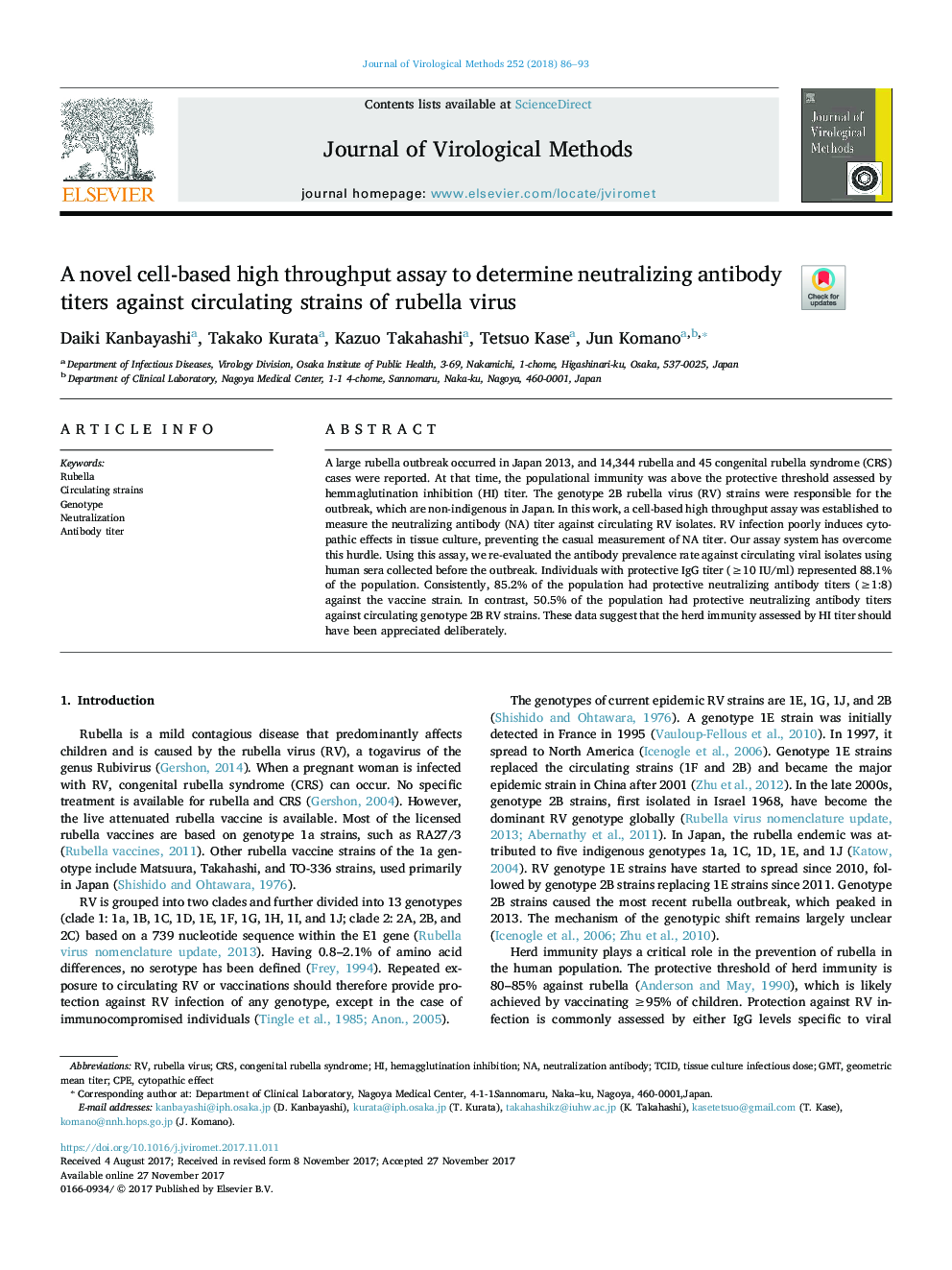| Article ID | Journal | Published Year | Pages | File Type |
|---|---|---|---|---|
| 8747148 | Journal of Virological Methods | 2018 | 8 Pages |
Abstract
A large rubella outbreak occurred in Japan 2013, and 14,344 rubella and 45 congenital rubella syndrome (CRS) cases were reported. At that time, the populational immunity was above the protective threshold assessed by hemmaglutination inhibition (HI) titer. The genotype 2B rubella virus (RV) strains were responsible for the outbreak, which are non-indigenous in Japan. In this work, a cell-based high throughput assay was established to measure the neutralizing antibody (NA) titer against circulating RV isolates. RV infection poorly induces cytopathic effects in tissue culture, preventing the casual measurement of NA titer. Our assay system has overcome this hurdle. Using this assay, we re-evaluated the antibody prevalence rate against circulating viral isolates using human sera collected before the outbreak. Individuals with protective IgG titer (â¥10 IU/ml) represented 88.1% of the population. Consistently, 85.2% of the population had protective neutralizing antibody titers (â¥1:8) against the vaccine strain. In contrast, 50.5% of the population had protective neutralizing antibody titers against circulating genotype 2B RV strains. These data suggest that the herd immunity assessed by HI titer should have been appreciated deliberately.
Keywords
Related Topics
Life Sciences
Immunology and Microbiology
Virology
Authors
Daiki Kanbayashi, Takako Kurata, Kazuo Takahashi, Tetsuo Kase, Jun Komano,
